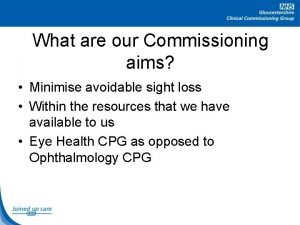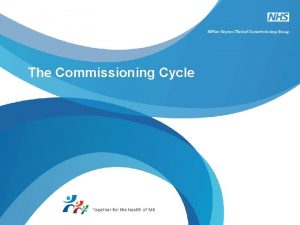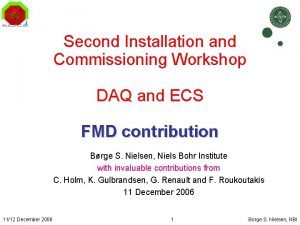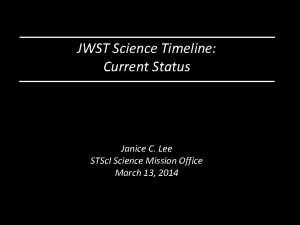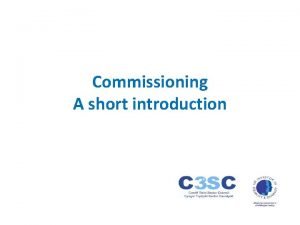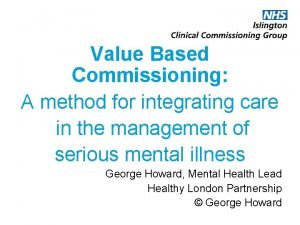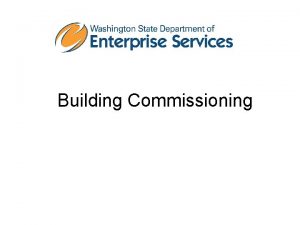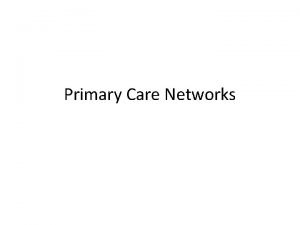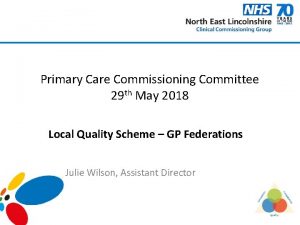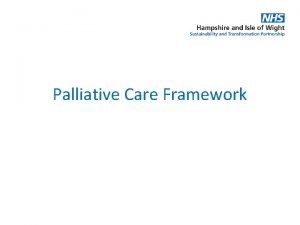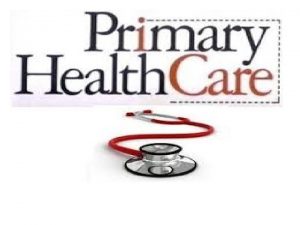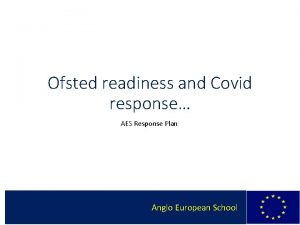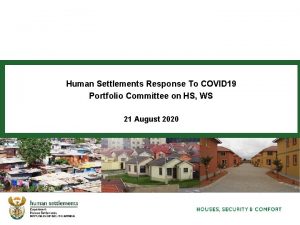Primary Care Covid Response Primary Care Commissioning Committee












- Slides: 12

Primary Care Covid Response Primary Care Commissioning Committee 4 th August 2020 Dr Sinha, local GP and Clinical Lead CCG Julie Wilson, Assistant Director

Aim of presentation • Provide assurance regarding the primary care response and continuation of services since the outset of Covid • Describe the operating model for primary care during the pandemic • Reflect on implications for medium and longer term operating model

The first few weeks … • As more information emerged regarding the spread of Covid in England, general practice was one of the first parts of the system to feel the impact • Guidance began to emerge very rapidly • It became clear that the ways in which services were delivered would need to change very quickly • NHS England Improvement issued a series of guidance letters on matters that required immediate implementation • Local decisions had to be taken quickly to ensure safety of patients and staff and to protect capacity (Chair’s action or local Risk Committee)

Key changes • Total triage model and significant shift to remote working, digital/virtual responses – – – Rapid completion of rollout of online consultation Rapid rollout video consultation Increase in electronic prescribing Processes to prevent unplanned walk-in of patients into buildings Removal of direct booking into appointments online • Prioritisation of workload (see later slide) • Increased infection and prevention control measures, including the wearing of personal protective equipment • NHS 111 triage and the COVID-19 Clinical Assessment Service • Increase in numbers of direct booking for NHS 111 into practice appointment slots • Changes to referrals to secondary care – initial pause in routine referrals, and shift away from direct booking of appointments

Key changes (2) • Identification of separate areas to see patients with COVID-19 symptoms and those without • Collaboration between practices and within Primary Care Networks to support resilience • Practices directed to be open on bank holidays for both Easter and early May bank holidays • PCN plans developed to implement ‘hot sites’ if numbers increased • Shielding of patients – identification and support, including home visits • Improved support to care homes residents, including advanced care planning • Regular NHSE/I ‘Preparedness letters’ and nationally developed Standard Operating Procedure underpinned these changes

Prioritisation of workload • National advice regarding stand down of QOF, over 75 health checks and new patient checks, routine medication reviews, PPG work • National pause in screening programmes • Prioritisation of routine immunisations to ensure continued focus on babies, children and pregnant women • Nationally directed pause in non-essential routine work, but with risk stratification to focus on vulnerable and most at risk • Routine CQC inspections stopped • Practices asked to stop private work • Local pause of enhanced services, unless they directly supported Covid response • Supported by RCGP recommendations - RCGP Covid-19 Workload Prioritisation Guide • Extent to which work ceased varied between practices depending on staffing issues, availability of PPE, etc. (e. g. some practices continued some routine work) • Whilst some work was ceased, funding continued at the same rate as pre. Covid outbreak

Local governance • Decisions taken through PCCC Chair’s Action or CCG’s Risk Committee, during period in which formal Committees were not meeting • Whats. App Group established amongst GPs to encourage prompt sharing of issues / ideas • Regular meetings established with PCN Clinical Directors to address specific issues / develop responses • PCN CDs and CCG Clinical Leads part of local system response group (NEL Health and Care Executive Covid Group) • Weekly webinars with all practice staff to share issues and emerging guidance (Chaired by Medical Director)

Local governance (2) • Regular email updates with summary of key guidance from Medical Director to all GPs and practice managers • Implementation of a daily situation report (SITREP)to monitor service delivery issues, utilising the RAIDR tool – covers all practices across North East Lincolnshire and reports their current situation at practice level by 10 am – allows practices to identify issues – staffing / demand / flu like activity / D&V activity / other viral activity / issues with PPE / Unable to treat vulnerable / ‘Other’ – Practices can amend their status during the day if their situation changes – this is flagged with the CCG

Local governance (3) • CCG facilitated work with PCN CDs on escalation framework to support resilience and manage service delivery in different scenarios • CCG ongoing support offered to any issues raised by the practices via CCG’s on-call inbox • Self-assessment tool developed for practices to help with standard operating procedure • Risk assessments for staff – CCG recommended risk assessment tool and offered support for practices with specific issues

New ‘normal’ • Re-instatement of routine work (but with individual assessment of staffing / PPE issues, etc. ) • Continued total triage model and remote consultation • Continued processes for management of face to face / walk-in • Encouragement of patients to continue to access services (CCG supported comms)

Implications for future • Need to look to retain positive aspects of response • Evaluate experience of those involved – patient engagement underway and staff engagement planned • Improved collaboration and system working

Summary • Swift radical shift and change to service delivery within general practice • Current mode of operation likely to remain for the foreseeable future to maintain social distancing and safe delivery of services • Likely to impact on longer term, future model of general practice
 A subsequent
A subsequent Levels of care primary secondary tertiary
Levels of care primary secondary tertiary Natural response and forced response
Natural response and forced response Natural response and forced response example
Natural response and forced response example Commissioning cycle
Commissioning cycle Amedd commissioning programs
Amedd commissioning programs Steps
Steps Ecs commissioning
Ecs commissioning Fortis commissioning sheet
Fortis commissioning sheet Jwst time line
Jwst time line Completions management system
Completions management system C3sc
C3sc Value based commissioning
Value based commissioning




